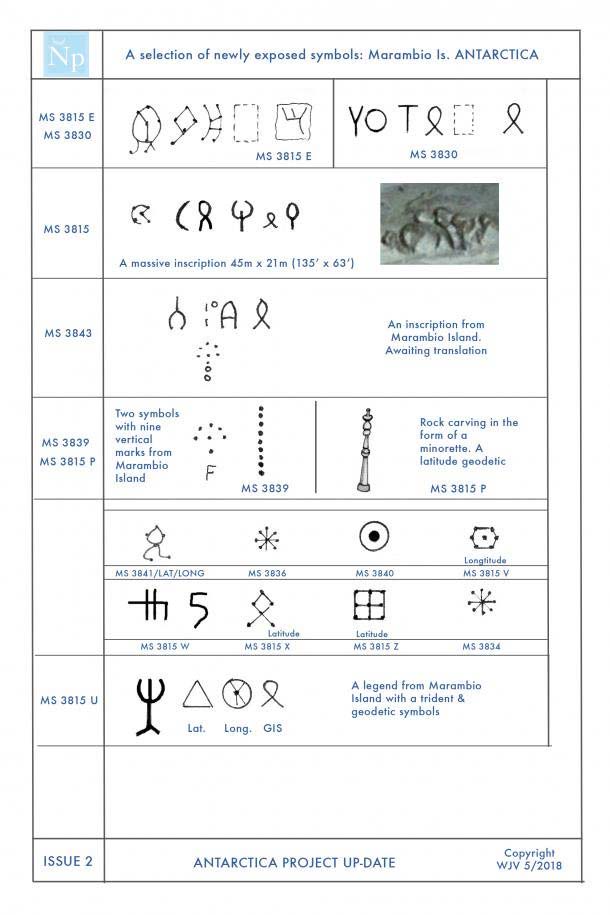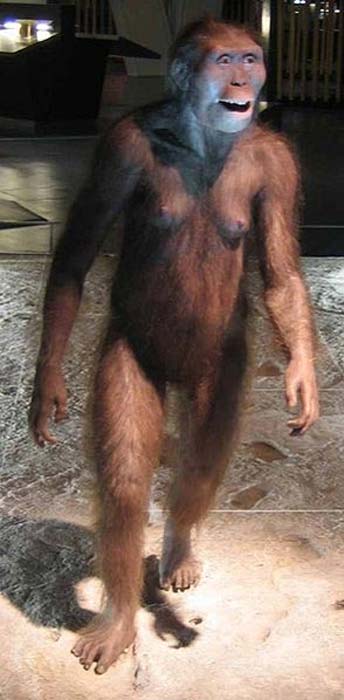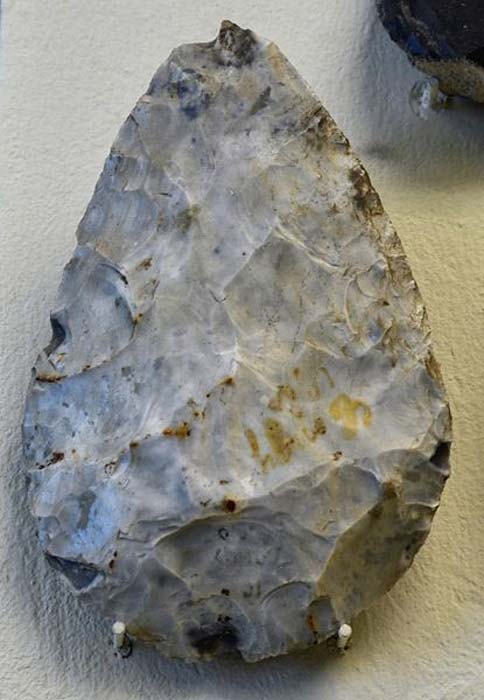
Antarctica's Origins Update – Part One: Deglaciation Reveals More Amazing Secrets
Rapidly gaining all the elements to create a truly groundbreaking and newsworthy discovery, Guest Author, Satellite Archaeologist, and pioneering Independent Researcher, William James Veall, is poised to enter the history books as he slowly and surely lifts the lid off the icy tomb that has encapsulated the Continent of Antarctica for the past million years or so.
New Inscriptions and Legends
I have tabulated just a few more of the inscriptions and legends exposed by the remote sensing, NASA, and DigiGlobe platforms.
Discoveries of significance follow the table in separate entities, as each needs to be supported by explanatory text and satellite photographs. All symbols, characters and imagery are interpreted within the limitations of the workpiece, which may have been subjected to severe environmental distortions leading to occasional unavoidable misinterpretations.
- Ancient Pyramids in an Icy Landscape: Was There an Ancient Civilization in Antarctica?
- Scientists Find 280-Million-Year-Old Fossilized Forest…in Antarctica
- The Buache Map: A Controversial Map That Shows Antarctica Without Ice

A selection of newly exposed symbols: Marambio Is. Antarctica. (Author provided)
Additional to the original hominin portrait from Nelson Island, (see Figure 2(a) below). I have added two new hominin images discovered on Marambio Island. Hominids include all modern and extinct great apes. Hominins are any species of early human that is more closely related to humans than to chimpanzees; this also includes modern humans.

Hominin images, left - right: Figures 2(a), 2(b), and 2(c) – Lucianna. (Author provided)
An obvious question: do these images, whomsoever carved them, record the remnants of an indigenous population living on Antarctica long before the first emigre's arrived - whether they came 'Out of Africa', or were Minoans, Tamils, Hindus, Egyptians, or Sumerians from Bolivia, et al?
Many of the human head and animal portraits I have exposed are either individually marked with legends or closely associated with inscriptive material, thus, as I have already pointed out in the past, general epigraphy enables a reasonably realistic and logical chronological time frame to be constructed for the artifact in question.
The Hominin with Flowers
Let us study Figure 2(a); without doubt a hominin. Observe the headware - garlanded with a flowered headband, another flower in the hair, and even the associated script is embellished with a flower! See also figure 4(a).

Figure 2(a) (left) and Figure 4(a) (right) - a hominin. (Author provided)
This is no primitive hominid, but a socially organized Homo sapiens many generations advanced from its ancestors of, say, 100,000 years before. A species that evolved cognitively either by cross breeding or natural selection.
According to current anthropological and genealogical thinking, such hybridization between, for example, the Neanderthals and Cro-Magnon would have an overlap time frame of 50,000 - 30,000 years ago, after which time the Neanderthals gradually died out - to be replaced by the artistic, cave painting, Cro-Magnon - who struck and used tools, wove cloth, made jewelry, and may have had an elementary form of speech. The Cro-magnon spanned the era 35,000-10,000 years ago, i.e. about 8,000 BC.
If the headbands worn by Figures 4(a) and 4(b) are accepted as a signature of group identity then, in my humble opinion, one can hypothesize that they fall into the category: homo sapiens australiopithecus (southern apes).

Figures 4(a) (left) and 4(b) (right) – note the headbands. (Author provided)
A Very Strange, Almost Alien-Like Humanoid
Figure 3(a) is, indeed, a very strange, almost alien-like humanoid with a long elongated skull, large eye sockets set with rather globular eyes - each partially closed by epicanthic eye lids. A light cranial ridge is visible, and the large mouth exposes the same crude and irregular incisors as Figure 2(a).
- Astonishing Human Heads: Do Satellite Photographs Now Prove Existence of Humans on Antarctica…6000 Years Ago? – Part I
- A Message on the Shore: Do Satellite Photographs Now Prove Existence of Humans on Antarctica…6000 Years Ago? – Part II

Figure 3(a) (left) – a strange, almost alien-like humanoid, similar to the elongated skull shown in Figure 3(b) (right). (Author provided) The photograph of the elongated skull, Fig. 3(b) is reproduced with the kind permission of Fine Arts and Facial Reconstruction Artist, Marcia K Moore, Ciamar Studio, USA. Her skeletal silhouette is used as a comparison piece with the unique sculpture discovered on Mariambo Island, Figure 3(a).
There is no visual evidence that the nose is other than flat or non-existent; the profile has a typical receding chin and jawline. Most noticeable is the lack of hair either on the face or over the skull. The fact that there are none of the usual sutures caused by cultural deformation to the cranium, suggests the elongated head is completely natural.
Original examination of the figure showed no obvious facial adornment, however, light highlighting, to improve printout, exposed a familiar 'star' marking on the left cheekbone, thus elevating this hominid into the ranks of hominin.
Additionally, carved into the same workpiece (lower right of the image) is a very indistinct legend, implying by its closeness that it might relate directly to the hominin itself; these two features, the 'star' and the legend, when translated, might help construct a provenance.
Although 'writing' was invented circa 3500 BC, i.e. about 6000 years ago, in Mesopotamia, current thinking suggests simple inscribed trading tokens were in wide use as 'proto money' by the 8th Millenium BC. Also believed by some scientists to be the basic symbols from which the very system of 'writing' evolved. If associated, then Figure 3(a) could date somewhere between 8000 to 7001 BC.
For comparison, the earliest known elongated skulls are Early Neolithic, circa 10,000 BC. Other skulls have been discovered in Egypt, Australia, and Iraq. Elongated skulls from Brazil, for example, are dated circa 7500 BC. (after Dr R. Louise. PhD.)

Example of the Paracas elongated skulls. ( Public Domain)
Many skulls and bones have been discovered over time, but, to the best of my knowledge, this is the first time sculptures depicting what hominins actually looked like 'in the flesh' have been discovered anywhere in the world.
Anthropologically speaking, I have some doubts about hominin, Figure 3 (a), which is certainly not of the 'great ape' lineage with its gentle, amphibian-like, globular eyes, epicanthic eyelids and elongated head - great ape heads are rather rounded with small piggy eyes and heavy cranial ridges.
However, both have the ragged protruding incisors in common. Does this suggest a new and different hybrid lineage? If so, what was the original parentage?
Any attempts to untangle the 'Out of Africa' theory and its multiple global migrations and connotations of integration effect is beyond the scope of this update. Satellite imagery can only introduce a suspect situation; it cannot replace a full and proper 'on the ground' forensic evaluation.
‘An Almost Child-Like Quality’
From the many new satellite portraits I have taken over Marambio Island, I have chosen to publish Figure 4(b); this dark toned image has an almost child-like quality. It has a small globular head with short black hair, large expressive eyes, a small round mouth and pointed chin, and, like the hominin in Figure 4(a), it sports a headband carrying a small flower motif.

Left-right: Figure 4(a), Figure 4(b) normal exposure, Figure 4(b) overexposed. (Author provided)
My visual description, however, may be misleading: 'child-like quality' could also infer that the hominin is small of stature after the likes of the hominid 'Lucy', an Australopithecus afarensis discovered in Ethiopia 40 years ago.
Lucy was a rather lightly built hominid with a small, globular skull, thin brow ridge, large eye sockets, small mouth with neat teeth, and a short jawline. Her skeletal DNA recorded an age of 3.2 million years.

A reconstruction of a female A. afarensis. ( Public Domain )
Is it possible that 'Lucy' and Figure 4(b) are from the same ancestral line, albeit 'Lucy's skeleton was discovered in Ethiopia and the portrait of 'Luciana' (well, why not?) was sculptured from a rock in Antarctica?
There is an alternative hypothesis: Figure 4(a) and Figure 4(b) are each located on the Antarctica Peninsula and wear the same garlanded headband. Could this infer the same group identity, same species and same provenance? The fact that 'Luciana' appears the more 'delicate' of the two might even suggest 'she' is the female of the species, Homo sapien australiopithecus.
- Tamils and Sumerians Among the FIRST to Reach Australia and Antarctica? PART I
- History’s Lost Transoceanic Voyages: Tamils and Sumerians Among the FIRST to Reach Australia and Antarctica?— PART II
Anthropologists believe at one point in time Homo sapiens became socially organized, may have developed a 'closed' form of simple speech, and had symbolic behavior (art) which they used for group identity or communication, e.g. painting themselves with black or red ochre mineral pigments and wearing simple shell 'jewelry' adornment.
If this hypothesis is to be sustained, we must not forget that the creation of a notation system and figurative art could not be achieved without the leap made in the Middle Stone Age (MSA) from the old fashioned Acheulean tool kit to the Mousterian era - which made available, amongst other tools, extremely sharp stone chisels, sometime between 100,000 BC and 40,000 BC.

Example of a Mousterian stone biface tool. ( CC0)
Who Were the Early Explorers to Antarctica?
Hence is it fair to speculate that the indigenous population on Antarctica created their own rock-cut intaglios to which they added a system of 'written' notation? If so, did a colored race of homo sapiens bring this knowledge with them 'Out of Africa'?
The fascinating account of finding two near identical human head portraits; Figure 5(a) and 5(b), one rock carved on Marambio Island, Antarctica, the other standing as a monument far across the oceans on the Yala Beach front, Sri Lanka, as demonstrated in the photo-strip below, placed the Tamils among the earliest explorers to touch down on the Continent of Antarctica more than 6000 years ago.

Left – Right: Figure 5(a), carved on Marambio Island, Antarctica, and 5(b), a monument on the Yala Beach front, Sri Lanka. Figure 5(c) is a drawing of 5(a). (Author provided)
This important discovery strengthened my hypothesis that the Tamils established a trans-oceanic trading route from Sri Lanka, south along the coastlines of Indonesia to Papua New Guinea, and across the Torres Strait directly on to Australia's Cape York Peninsula.
Space archaeologist and independent researcher, William James Veall is Director of Nascodex and Consultant to Nascodex Publications , and author of Portraits of the Gods .
Top Image: Craggy mountain landscape in Antarctica ( Public Domain). Insert: Hominin image Figure 2(a). (Author provided)
References
BROTHWELL D. Digging Up Bones. Oxford University Press. UK 1981
CLARKE G. World Prehistory. Cambridge University Press. UK 1977
PARCAK S. Satellite Remote Sensing for Archaeologists. Routledge UK 2009
REDMAN,C. Rise of Civilisation. (The Near East) W.H. Freeman. USA 1978
UCKO P.J. Form in Indigenous Art (Edited by) Duckworth, London UK 1977
VEALL. WJ. Portraits of the Gods. Nascodex Publications. Catalunya. 2016
WINTERS C. Ancient Scripts in South America. Amazon.com/1519257546
WINTERS C. Archaeological Decipherment of Ancient Writing Systems. Amazon.com/ 1532967368
LOUISE, Dr R. www.ancient-origins.net/unexplained-phenomena-opinion-guest-authors/world-wide-mysterious-phenomena-elongated-skulls-00939 27 Oct 2013
MOORE. M.K. www.marciakmooreciamarstudio.com Please support Marcia's exciting new venture on MarciaKMooreProposal.pdf
ROBERTS Dr. R. www.dailymail.co.uk/sciencethech/Article-4883302
Note: "Portraits of the Gods can be purchased direct from iTunes: https://itunes.apple.com/ca/book/portraits-of-the-gods/id655122031?mt=11
















Comments
There are also heads / faces found on Mars
There is a similar short stumpy head
And one that looks like Apollo
There is also one that looks like Obama frowning
Not to mention the giant face next to the pyramid